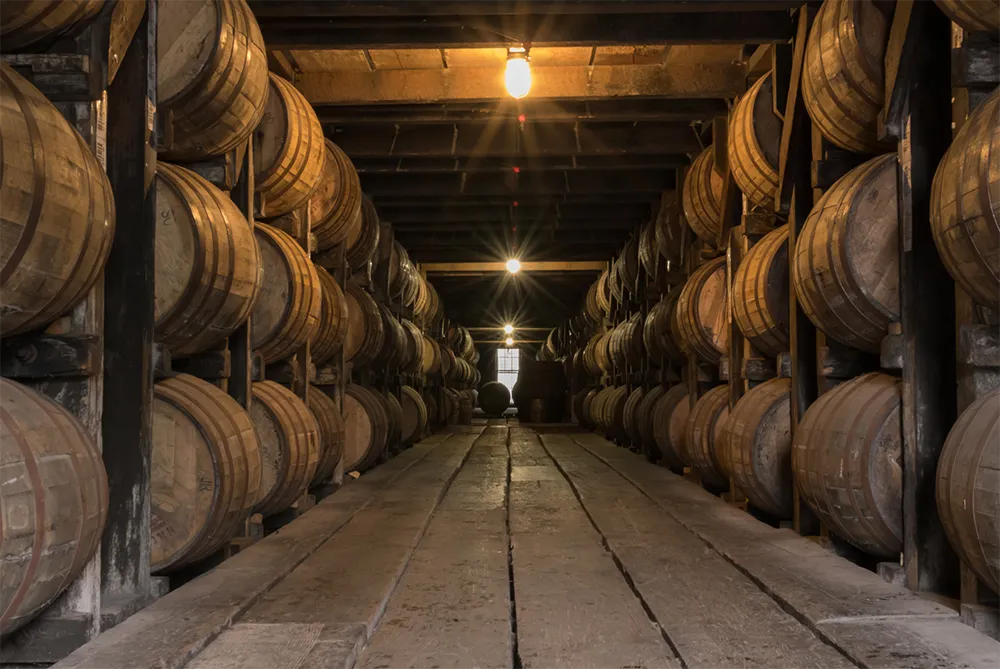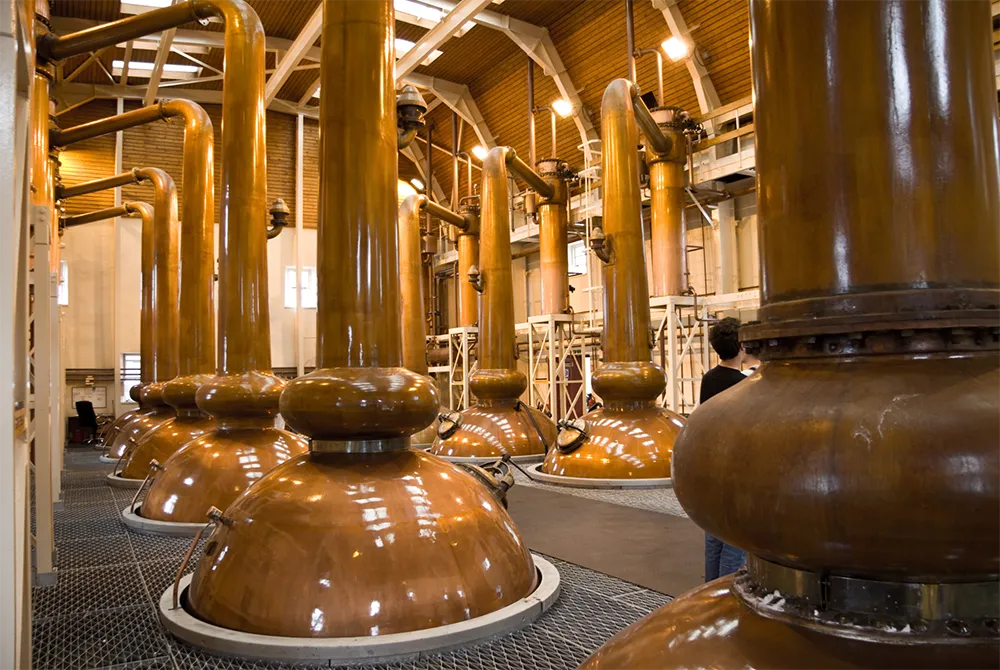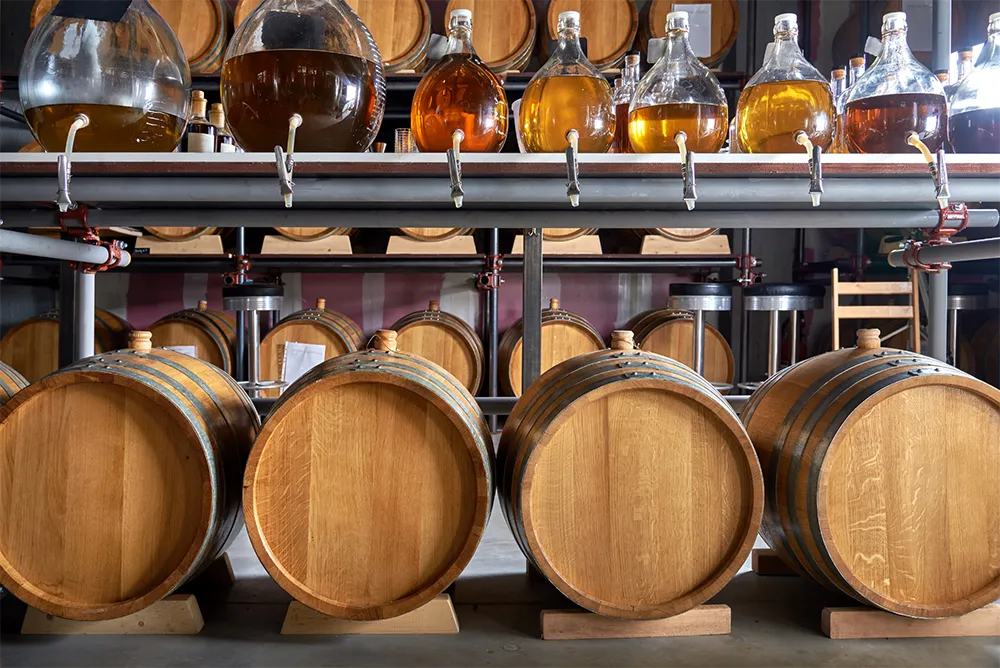In the previous article I told you about Alsace and its wines.
In this article I talk about whisky and how it is made. If you like cocktails, discover some whisky-based cocktails.
This spirit is obtained from the distillation of cereals and then aged in wooden barrels.
Index:
- Whisky or Whiskey?
- How it is made
- Malting
- Mashing
- Fermentation
- Distillation
- Maturation
- Types of whisky
- When it was born
Whisky or Whiskey?
Whisky refers to the one distilled in Scotland and Canada.
While whiskey refers to the one distilled in Ireland and the United States.
The two spirits are different both from an olfactory and a gustatory point of view.
Whisky: how it is made
The materials to produce a whisky are:
water
- cereals: barley, rye, corn, wheat
- peat: used to dry the malt
- yeast
The production process is in various stages:

Malting
In this first stage, the grain is soaked in water tanks for 48/70 hours and then laid on a floor – malting floor – to germinate.
Only barley germinates, while all other cereals do not. To the harder cereals – maize, wheat, rye – barley is added to serve as a starter for fermentation.
Then the grain dries in special ovens, called klin.
Infusion / Mashing
Water is an essential raw material for a quality end product. This is why the oldest distilleries are near watercourses.
Next step is called mashing, i.e. the dried malt is ground and mixed with water in large vats, i.e. mash tuns, and brought to a temperature of no more than 80 to 85 °C. Then, the result is filtered.
The purpose of this stage is to create a non-alcoholic solution in which the sugars are dissolved. The sugars, once hydrated, combine into chains that make them available for fermentation.
In fact, the result of this phase is the Wort, i.e. a non-alcoholic Wort.
Fermentation
The Wort is cooled and brought below 20 °C to allow the yeasts to proliferate. It is then decanted into a container called a washback. The yeasts feed on sugars and develop heat and carbon dioxide.
Fermentation lasts from 48 hours to a few days. The time varies according to the producer’s recipe.
Fermentation takes place in containers, either steel or wood.
The result of this phase is similar to beer and is called Wash. Wash has an alcohol content of 7 – 9 °C.
What remains of the Wort, i.e. the waste, is used for cattle feed.
Distillation
In distillation, the wash is divided into two parts:
water and processing residue: remain inside the still
the alcohol part is distilled in alternating phases, up to the desired percentage of alcohol
There are two types of distillation:
- Pot still
- Coffey still

Pot still
This method is the oldest and most widely used by Irish brewers.
A copper still is filled with Wash and heated to boiling point.
Evaporation separates the water from volatile compounds such as flavourings and alcohol.
The steam passes through the neck of the still inside coils that condense, lower its temperature and return it to a liquid state.
The stills are made of copper because:
- a homogeneous temperature is achieved
- unpleasant sulphur compounds are eliminated in less time
Coffey still
This method is named after its inventor Aeneas Coffey in 1831. Coffey invented the column still, known as the continuous still. This still consists of two stainless steel columns. This method produces a purer product with a higher alcohol content.
The Coffey still is mainly used in the United States and around the world.
This method exploits the ascending effect of water vapour. This is introduced at the base of the first column, where it meets with the Wash that descends from above, thanks to a system of micro-perforated copper plates.
The water vapour, when it meets the Wash, carries with it the alcoholic part and the aromas and separates them from the watery part.
Then, the water vapour passes to the second column, where it condenses thanks to a system of cold coils. The heavier substances precipitate at the base of the column, while the more alcoholic and volatile parts condense in the upper layers.
Each alcoholic strength has 3 levels:
- head
- heart
- tail
Only the ‘heart’ is kept, while the head and tail are discarded.
“Head” is all those elements that have a lower evaporation point than ethyl alcohol.
“Tail” consists of the higher alcohols and crude esters.
“Head” and ‘tail’ contain substances that are harmful to humans and are therefore discarded.
This method is more economical and continues to feed the wash into the cycle. In fact, this method can proceed without interruption.
Maturation
Oak barrels are used for maturation and each producer decides whether to use second-pass bourbon barrels or second-pass casks from Sherry, Port, Madeira.
In the United States, regulations require the use of charred virgin casks.

Whisky is influenced by the type of cask used, size, climate and maturation time.
For example, a whisky matured in bourbon barrels has a golden colour and has sweet flavours with hints of vanilla. In contrast, a whisky matured in sherry casks has a stronger colour and intense caramel notes on the palate.
Types of whisky
Whiskies are distinguished by origin:
- Scotch whisky: Scotland
- Irish whiskey: Ireland
- American whiskey: United States of America

American whiskeys include:
- Bourbon whiskey: contains 51% corn and is aged for at least 4 years in charred American oak casks
- Straight bourbon: aged for 2 years
- Rye whiskey: contains at least 51% rye and is aged for 4 years
- Tennessee whiskey: maple charcoal filtered whiskey
Whisky: when it was born
Scotland and Ireland dispute the paternity of this distilled spirit.
However, the first document was found in the Annals of Clonmacnoise (Ireland) and dates back to 1405.
In 1707, whisky became a symbol of American freedom.In 1749 Giacomo Justerini, an Italian, fell in love with opera singer Margherita Bellino and moved to London. After their break-up he and George Jonson created the J&B Blended Scotch Whisky.
Amo la buona cucina e le tradizioni enogastronomiche italiane, per me vino e dessert non sono solo un contorno ma la parte più interessante del buon vivere.













